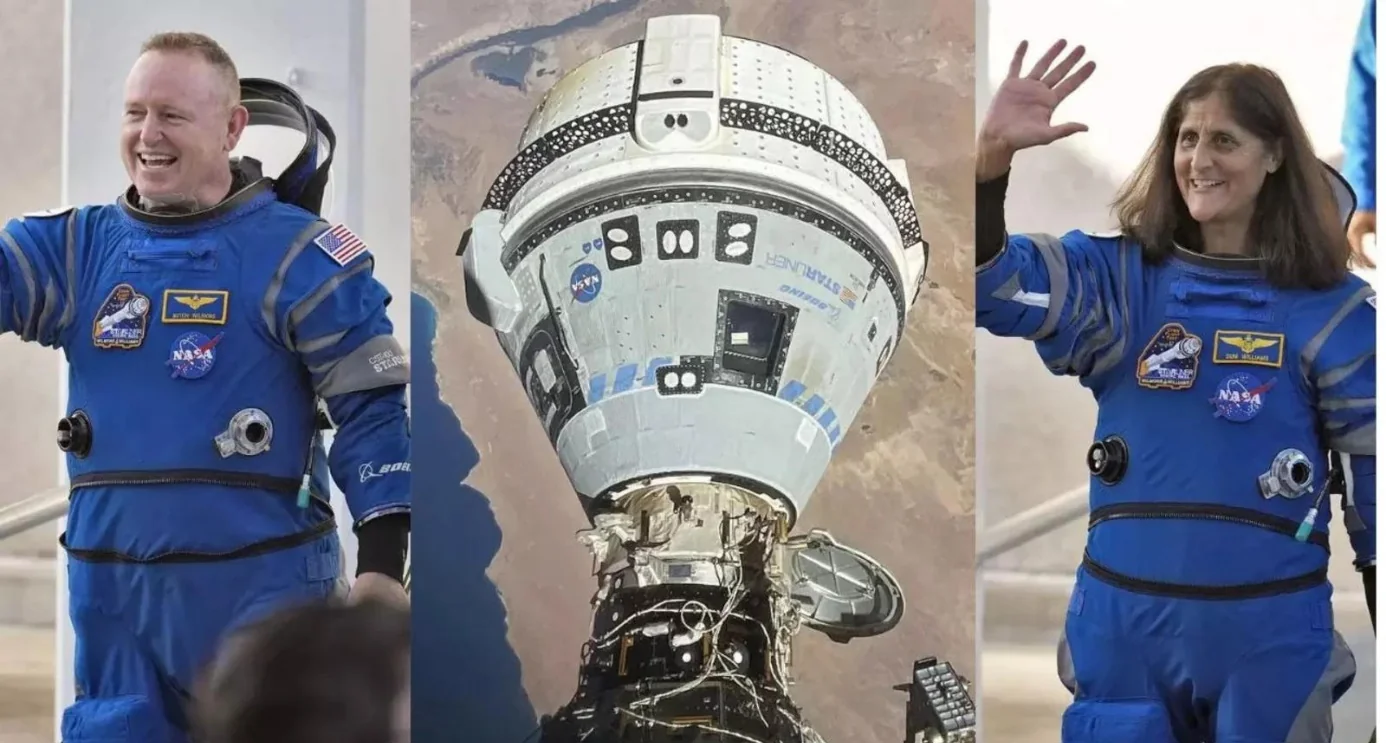
NASA Astronauts Butch Wilmore and Suni Williams Stranded on ISS After Boeing’s Starliner Capsule Returns to Earth Empty Without Crew in New Mexico Due to Technical Issues
Fiona Nanna, ForeMedia News
7 minutes read. Updated 5:06 PM GMT Sat, 7 September, 2024
Two astronauts, Butch Wilmore and Suni Williams, have been left stranded aboard the International Space Station (ISS) after NASA deemed Boeing’s Starliner capsule too risky for their return journey. The Starliner spacecraft, plagued by technical issues, landed empty in the New Mexico desert, leaving the two astronauts on the ISS for an extended stay until February 2024.
The capsule, operating on autopilot, safely descended and touched down at 11:01 p.m. local time on Friday, equivalent to 5:01 a.m. on Saturday in the UK. The white streak of the descending spacecraft was caught on cameras, prompting cheers from Boeing’s mission control team, relieved to see a “bull’s-eye landing” after a long string of delays and malfunctions. However, this seemingly successful return does little to alleviate the underlying concerns surrounding Boeing’s troubled space program.
A Decade of Struggles for Boeing’s Starliner Program
Boeing’s Starliner capsule has been a centerpiece of NASA’s Commercial Crew Program since the company signed a contract over a decade ago, valued at over $4 billion. The spacecraft was intended to provide a reliable option for transporting astronauts to and from the ISS, alongside SpaceX’s Dragon capsule. However, the road to operational success for Boeing has been fraught with challenges.
The capsule’s initial uncrewed test flight in 2019 encountered significant technical glitches, prompting Boeing to repeat the mission in 2022. Despite efforts to rectify these issues, subsequent tests revealed further flaws, including thruster failures and propulsion-system helium leaks. The mounting costs of repairs have already exceeded $1 billion, placing Boeing under increasing pressure.
During the most recent mission in June 2024, Boeing’s Starliner faced critical thruster issues before it even reached the ISS. Despite extensive tests both in space and on the ground, NASA ultimately decided that it was too dangerous for Wilmore and Williams to make the return trip in the capsule. As a result, the two astronauts, who initially embarked on what was supposed to be a short eight-day mission, now face an extended stay aboard the ISS until February next year.
NASA’s Concerns and the Path Forward
Despite Boeing’s reassurances, NASA officials opted for caution, leaving Wilmore and Williams onboard the ISS while the agency works through the technical issues plaguing Starliner. “There were some snags during Starliner’s reentry, including more thruster issues, but Starliner made a bull’s-eye landing,” said Steve Stich, NASA’s commercial crew program manager.
Boeing’s underperformance contrasts sharply with SpaceX, which has emerged as NASA’s go-to provider for crewed missions to the ISS. Later this month, SpaceX will launch its tenth crewed mission for NASA since 2020, a significant milestone highlighting the company’s reliability. The Dragon capsule will fly with two astronauts instead of the usual four, as two seats have been reserved for Wilmore and Williams on their eventual return trip.
Despite Boeing’s continued setbacks, NASA has reaffirmed its commitment to maintaining two US-based companies in the space transportation industry. The agency’s long-term plan is to rotate crews between Boeing’s Starliner and SpaceX’s Dragon, with one mission per company per year. However, with the ISS scheduled for decommissioning in 2030, Boeing is running out of time to prove Starliner’s reliability.
Starliner will now be transported back to NASA’s Kennedy Space Center, where engineers will conduct a thorough analysis of the reentry issues and the spacecraft’s overall performance. The findings from this assessment will determine the timeline for future manned missions and help Boeing address its shortcomings.
SpaceX Leading the Way as Boeing Struggles
Boeing’s struggles are especially apparent when contrasted with SpaceX, which has successfully launched nine crewed flights for NASA since 2020. SpaceX’s Dragon capsule has become the workhorse for NASA’s human spaceflight program, achieving consistent success and establishing itself as a reliable option for ferrying astronauts to and from the ISS.
As Boeing works to overcome Starliner’s persistent problems, NASA’s reliance on SpaceX grows stronger. The two companies are intended to alternate missions, but so far, SpaceX has been carrying most of the weight in NASA’s crewed space program. This uneven competition could leave Boeing scrambling to keep up before the ISS’s planned decommissioning in 2030.
Nevertheless, NASA remains hopeful that Boeing can still deliver on its promise, and the agency is committed to ensuring the success of both companies in its commercial crew program. For now, however, all eyes are on SpaceX as it gears up for its next mission, while Boeing works behind the scenes to bring Wilmore and Williams back to Earth safely.
Focus keyword phrases:
- Boeing Starliner issues
- astronauts left on ISS
- Starliner reentry problems
- NASA Commercial Crew Program
Meta description:
NASA decides to leave two astronauts on the ISS after deeming Boeing’s Starliner capsule too risky for a return journey. Despite a safe landing, Starliner’s reentry issues raise questions about Boeing’s future in space transport.

